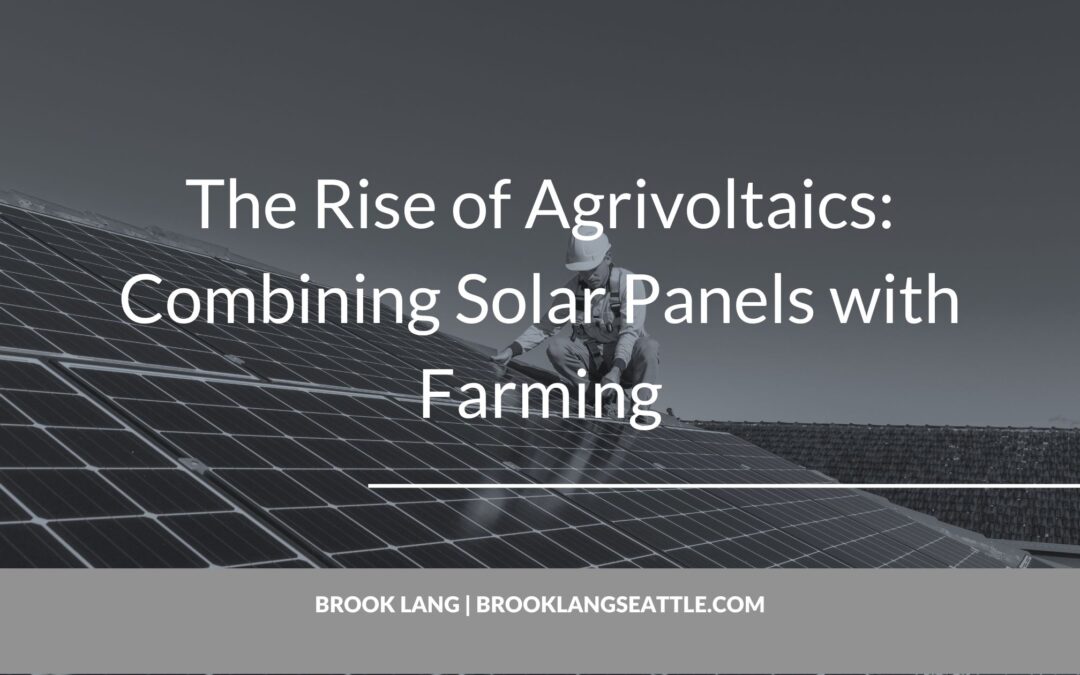As the demand for renewable energy increases, one of the biggest challenges is finding enough land for large-scale solar farms without competing with agricultural needs. Agrivoltaics, also known as agrophotovoltaics, offers a groundbreaking solution. By integrating solar panels directly into farmland, agrivoltaics allows crops and clean energy to coexist on the same land, maximizing its use and creating benefits for both farmers and energy producers.
How Agrivoltaics Works
In an agrivoltaic system, solar panels are elevated or strategically spaced to allow sunlight to reach the crops below. This design not only generates electricity but also creates a microclimate that can enhance agricultural productivity. The shade provided by the panels can reduce heat stress, conserve soil moisture, and protect plants from extreme weather conditions. At the same time, crops beneath the panels can help maintain cooler temperatures around the system, improving solar panel efficiency.
Benefits for Farmers and Communities
One of the most significant advantages of agrivoltaics is the ability to diversify income. Farmers can earn revenue from both crop production and energy generation, reducing their financial vulnerability to unpredictable weather or market fluctuations. The system also strengthens local energy independence by supplying renewable electricity to nearby communities.
Environmental benefits are equally compelling. Agrivoltaics reduces the need to convert natural habitats into solar fields, conserves water through reduced evaporation, and lowers greenhouse gas emissions by replacing fossil fuels. In regions prone to drought or high temperatures, this dual-use approach can help build climate resilience for both food and energy systems.
Global Applications and Innovation
Countries around the world are experimenting with agrivoltaic projects. In Japan, solar panels are being installed above tea fields and rice paddies. In France, vineyards are adopting agrivoltaics to shield grapes from excessive sun. In the United States, pilot programs are exploring its potential in arid regions, where conserving water while producing renewable energy is critical. Each application demonstrates how agrivoltaics can be adapted to local crops and climates.
Technological innovations are also improving the system. Adjustable solar panels can tilt to maximize sunlight for crops during key growth periods. Transparent or semi-transparent panels are being developed to allow more light penetration, further balancing the needs of crops and energy production.
Challenges to Overcome
Despite its promise, agrivoltaics faces barriers. Initial installation costs can be high, and farmers may hesitate to adopt new technologies without proven long-term results. Policies and incentives are still evolving, and in many regions, regulations around land use and energy distribution need to be updated to support agrivoltaic systems. Collaboration among governments, researchers, and the private sector will be key to scaling this model effectively.
The Future of Food and Energy
Agrivoltaics represents a powerful shift in how we think about land use. Instead of choosing between food production and clean energy, we can design systems that deliver both. As the world seeks sustainable solutions for feeding a growing population while combating climate change, agrivoltaics provides a pathway that blends innovation, resilience, and environmental stewardship.
By combining solar power with farming, we can grow food and harvest energy—ensuring a brighter and more sustainable future.
